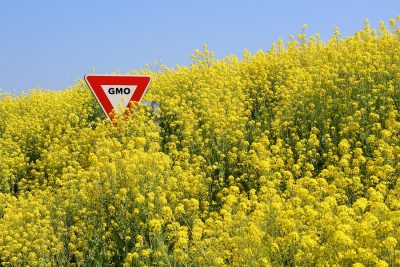GM Canola Persists 20 Years after Field Trials Ended in Tasmania

Australia accounts for 0.4% of the world’s GM agriculture hectares. Its island state of Tasmania is however marketed as ‘clean and green’, and sometimes as ‘clean and green and smart’. Tasmania has maintained a GM Moratorium since 2001, and has excluded genetically modified organisms (GMOs) from the state since then.
In the late 1990s, and before Tasmania’s GM Moratorium was in place, there were Monsanto and Bayer field trial sites of herbicide-resistant GM canola across the state. For the two decades since the end of those GM trials, these sites have been audited yearly by the state government because of “the likely persistence of GM canola seeds in the soil”.
A timeline of the audit outcomes reveals that despite the efforts to exterminate the trial crops, GM canola has persisted in the environment, and, even after the passage of two decades, some trial sites still report the presence of volunteer (rogue) canola plants.
This situation points to the conclusion that any jurisdiction considering allowing GM crops, needs to consider GM crops as an invasive species and put in place appropriate biosecurity mechanisms. Reversal of introduced GMOs can be expected to be difficult, and perhaps even impossible.
***
The Persistence of Genetically Modified (GM) Canola in the Environment: The Experience of Genetically Modified Organisms (GMO) Trials in Tasmania, Australia
by John Paull
Abstract
Australia’s island state of Tasmania is marketed as ‘clean and green’, and sometimes as ‘clean and green and smart’. These sentiments underpin the positioning of the state as both a tourist destination and as a premium food producer. Tasmania has maintained a GM Moratorium since 2001, and has excluded genetically modified organisms (GMOs) from the state since then. Australia accounts for 0.4% of the world’s GMO agriculture hectares (Fig.1). Tasmania’s GMO Moratorium is consistent with Australian consumer sentiment that GMOs are not safe, and international consumer sentiment that GMOs are to be avoided. In the late 1990s, and before Tasmania’s GM Moratorium was in place, there were Monsanto and Bayer field trial sites (n=57) of herbicide-resistant GM canola across the state.
For the two decades since those GM trials finished, and while the GM Moratorium has been in place, the trail sites have been monitored by the state government because of “the likely persistence of GM canola seeds in the soil”. Audit reports have been conducted annually by the Tasmanian Government. A timeline of the audit outcomes reveals that despite the efforts to exterminate the trial crops, GM canola has persisted in the environment, and, even after the passage of two decades, some trial sites still report the presence of volunteer (rogue) canola plants (Fig.2). The conclusion is that any jurisdiction considering allowing GM crops, needs to consider GM crops as an invasive species and to put in place appropriate biosecurity mechanisms. Reversal of introduced GMOs can be expected to be difficult, and perhaps even impossible. A strategic plan of how a GMO introduction may be reversed needs to go hand in hand with any GMO approval and subsequent environmental release. To reinstate a GM-free environment, unless a strategic plan with a clearly formulated recall pathway, including a clear endpoint and assurances, is in place, a jurisdiction is left with ongoing auditing and/or extermination challenges.
*
Note to readers: please click the share buttons above or below. Forward this article to your email lists. Crosspost on your blog site, internet forums. etc.
Featured image is from Genetic Literacy Project

